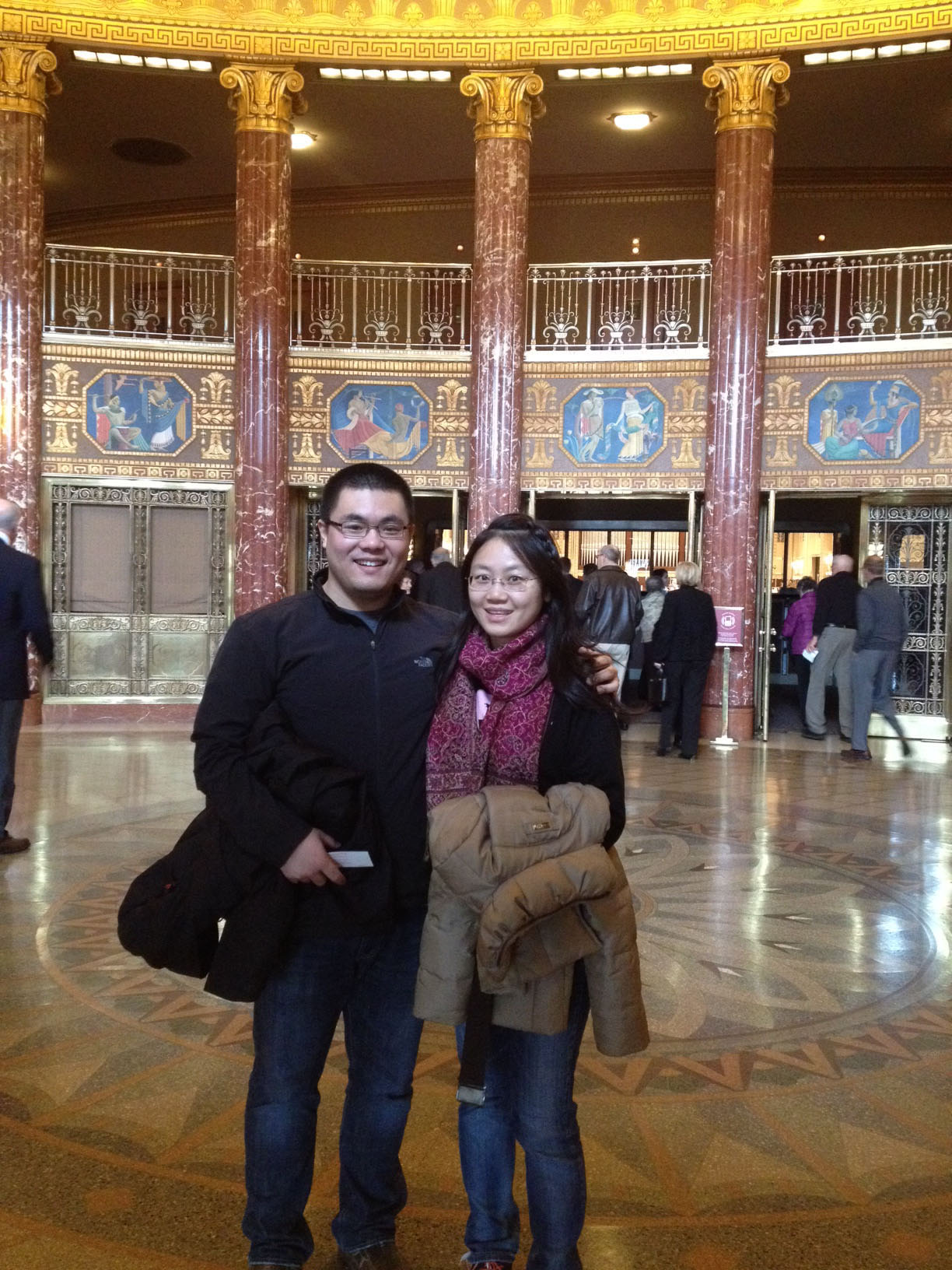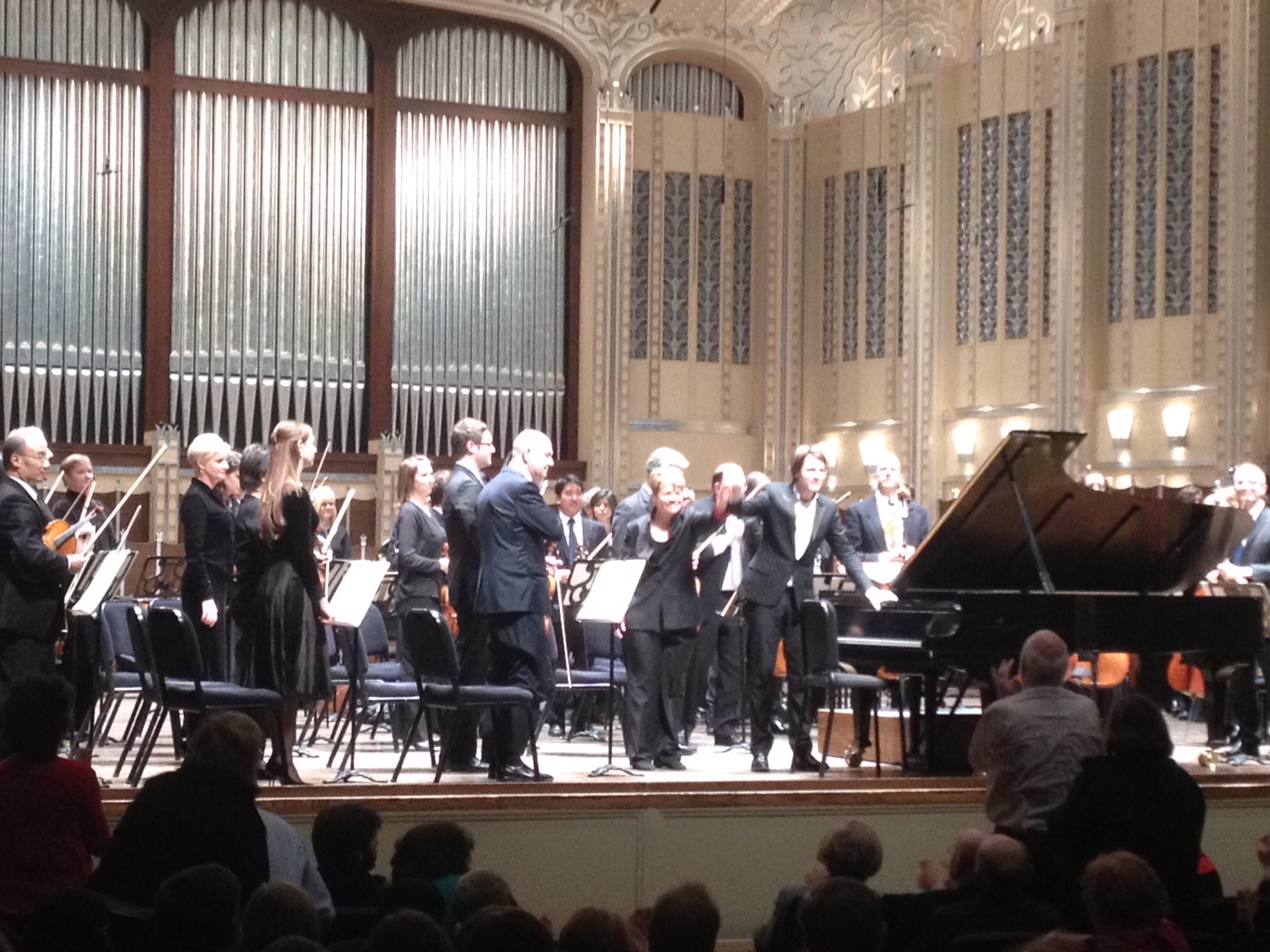Cleveland Orchestra at Severance Hall
December 04 2013We were in Cleveland last weekend for my friend Leo’s wedding. Seeing as we likely won’t be making it back to Cleveland anytime soon, we decided to make a trip to Severance Hall for the Cleveland Orchestra.
First some thoughts on Cleveland the city and the surrounding area. I had some preconceived notions about Cleveland. First, there’s the infamous Cleveland tourism video that went viral a few years ago. Then, there’s Cleveland’s streak of crushing sports losses. Finally, there’s this perception that Cleveland hasn’t really been relevant for many years, basically back to the times when manufacturing in the US was still relevant.
I’m unhappy to report that all of those things seem true. First of all, the surrounding area of Cleveland is really expansive and sparse. It’s unclear why suburbs like Akron and Canton are so far away from Cleveland, since it doesn’t really look like there is much in between. In Cleveland itself, it’s odd to see a city skyline that is filled with old factories and smoke. Finally, the area immediately east of downtown Cleveland is really depressing. There are abandoned building and empty lots all over. The odd thing is that this area is sandwiched between the two areas that Cleveland most wants tourists to see - downtown and University Circle, a nice location with museums, parks, Case Western University, and Severance Hall.
The Cleveland Orchestra follows a similar trajectory as the city. It was really relevant in the 1950’s when George Szell built it into an internationally recognized orchestra. More recently, they’ve had some issues. I don’t see regular recordings from them anymore. Their musicians also recently walked out during a brief strike in 2010. It’s clear that the orchestra is feeling some financial pressures, and I’m sure the general economic outlook for Cleveland the city is affecting that.
The first thing that I noticed about Severance Hall is its size. When you walk into Severance Hall, there is just one small lobby area that serves every purpose (tickets, refreshments, bathrooms, coat check). This small space leads to an upstairs area that serves as the main reception area for the hall. Both of these spaces are small, about the size of a small cozy bar. The seating area seems small as well - three very compact areas on the orchestra level and a small balcony area. This is actually pretty beneficial, as the narrowness of the seating leads to pretty good views from all seats. A quick fact checking reveals that Severance Hall seats 1,844. For comparison, Symphony Center in Chicago seats 2,522 and Benaroya Hall in Seattle seats 2,481.

The program for the day was American-heavy, starting with Barber’s Essay for Orchestra No. 2 and ending with Copland’s Symphony No. 3. Schumann’s Piano Concerto was sandwiched between the two American works. Although the music director for the Cleveland Orchestra is Franz Welser-Möst, Marin Alsop conducted this program.
The Barber I have some experience with, as I recently played it with the PSSO. It’s non-programmatic and distinctly modern sounding. Although it’s not explicitly laid out this way, the essay is in three broad movements. The first theme melody is beautiful, but it never makes you feel comfortable the way that romantic melodies from Tchaikovsky or Dvorak sounded. The second theme is a fast and chaotic round, very difficult for the orchestra. The final theme is a very simple chorale with a beautiful and peaceful melody that’s easy to understand for almost all listeners.
The level that the Cleveland Orchestra plays at is very high. Their phrasing and articulation are so sharp. They are one of the few groups for which you can take a picture of them while playing, and every single string player will be in the exact same part of the bow.
I had some of the same feelings I used to get while watching the CSO; namely, that the music was too easy for the musicians and they were slightly bored. They played the Barber wonderfully. The only two things that stood out to me were the lack of meaningful energy coming from the musicians and an odd shrinking of the dynamic range. For the Barber, they played approximately from piano to mezzo-forte. I never heard a loud or big sound, and originally I thought it might be due to the hall or where we were seated (we were pretty close to the stage on Orchestra left). I found this later to be untrue. Still, for the Barber, there was a very strong string sound and very little support from the brass or winds.
The Schumann Concerto was played by David Fray. I’ve always liked the Schumann, and I suspect many listeners like it for the same reasons as I have. It’s a very accessible piece with memorable melodies and a simple structure. In some ways, it’s like the Bruch of Piano Concertos - simple, beautiful, and brings out the best in its featured instrument. In recordings, it frequently gets paired with the Grieg Piano Concerto because both are in A minor and relatively straight forward classical pieces.
David Fray Cleveland Orchestra both played well. The same lack of energy and small dynamic range still persisted. Here at least it’s more understandable, as the orchestra wants the audience to focus on the soloist.
The conclusion of the Schumann led to the greatest surprise of the day for me - the lack of a standing ovation for the pianist. I had always assumed that the people of Cleveland, like Chicagoans, are “Midwest-nice”. In Chicago, almost every artist gets a standing ovation no matter the quality of the actual playing. David Fray got some tepid applause and a small scattering people that stood up (to my eyes, around 10-15). After he exited the stage and re-appeared, a few more people stood up, but it was still only around 10% of the hall. Who knew the Clevelanders could be so tough!

I actually have a few theories on why they are so tough. Classical music audiences everywhere are predominantly senior citizens, but the audience for the Cleveland Orchestra was REALLY old*. Perhaps the audience is more sophisticated than the midwest audiences, and they were holding out for a truly transcendant performance. My other theory is that the audience was so old, they simply didn’t have the energy to stand up.
* As we headed to the reception lobby during intermission, we could clearly smell urine near the seats in the back. This was a more clear urine smell than you even get in the New York subway. I think someone had an accident.
Copland’s Symphony No. 3 finished the program. This symphony is thematically based on his Fanfare for the Common Man (in her short speech to the audience before the start of the piece, Marin Alsop said the DNA of the symphony comes from Fanfare). Here, the Cleveland Orchestra really shined. There was still a lack of energy, but the dynamic range really opened up and the brass started to shine.
I still don’t think Cleveland measures up to the great orchestras I’ve heard, including Chicago and the Concertgebouw. They have an outstanding legacy and their musicians are very talented. But, I just didn’t get any energy or excitement from watching them play. Hopefully, there will be better days ahead for this group.
comments powered by Disqus